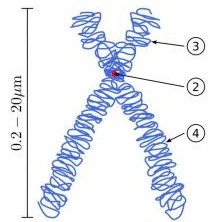果蝇常被用来进行遗传研究,因为其寿命比较短,而且在实验室可以很容易繁殖,其突变体可以被广泛使用。目前果蝇有1500中已知的种。近日一项刊登在Science上的研究追踪了果蝇一对性染色体的进化历程,这对染色体大约在100万年之前出现。
果蝇的X、Y染色体和人类的很像,在尺寸和基本序列上存在很多不同;人类的染色体对被认为是出现于200万年之前,Y染色体仅仅包含有50个基因,而X染色体包含着将近1000个基因。在许多物种中,从常染色体到性染色体的进化发生的时间非常之久,而且难以追踪。
来自加州大学的研究者通过研究果蝇属米兰达果蝇(miranda flies)的全基因组,试图去寻找性染色体的进化过程。
当果蝇近X和近Y染色体形成的时候,大约3000个基因和性染色体相关,雌性果蝇X染色体有两个拷贝,而雄性X和Y各有一个拷贝。在数百万年的进化之中,Y染色体显现出大的退化迹象,有近乎三分之一的Y染色体失去了功能。随着基因失去功能,Y染色体上的其它基因开始进化变得对雄性更加有益,并且表达诸如男性的一些标志性特征,如前列腺以及睾丸等。相似的进化也发生在X染色体上,随之表现而来的是基因表达成为特定的雌性组织。
基因表达的过程对于雌性比较有益,因为雄性仅仅含有一个拷贝的X染色体,相比Y染色体而言,X染色体的表达分配会更慢一些。然而X染色体的进化并不缓慢,当然包括一些大事件的发生,比如其它染色体上的基因掺入X染色体中。
研究者Bachtrog表示,果蝇中某些性染色体也会转变成为常染色体,而且很有可能米兰达果蝇的Y染色体最终会消失,或者有可能另外一种决定性别的机制正在进化之中。
相关文献:
Sex-Specific Adaptation Drives Early Sex Chromosome Evolution in Drosophila
Most species’ sex chromosomes are derived from ancient autosomes and show few signatures of their origins. We studied the sex chromosomes of Drosophila miranda, where a neo-Y chromosome originated only approximately 1 million years ago. Whole-genome and transcriptome analysis reveals massive degeneration of the neo-Y, that male-beneficial genes on the neo-Y are more likely to undergo accelerated protein evolution, and that neo-Y genes evolve biased expression toward male-specific tissues—the shrinking gene content of the neo-Y becomes masculinized. In contrast, although older X chromosomes show a paucity of genes expressed in male tissues, neo-X genes highly expressed in male-specific tissues undergo increased rates of protein evolution if haploid in males. Thus, the response to sex-specific selection can shift at different stages of X differentiation, resulting in masculinization or demasculinization of the X-chromosomal gene content.
来源:生物谷 http://www.bioon.com/biology/Class18/526632.shtml



